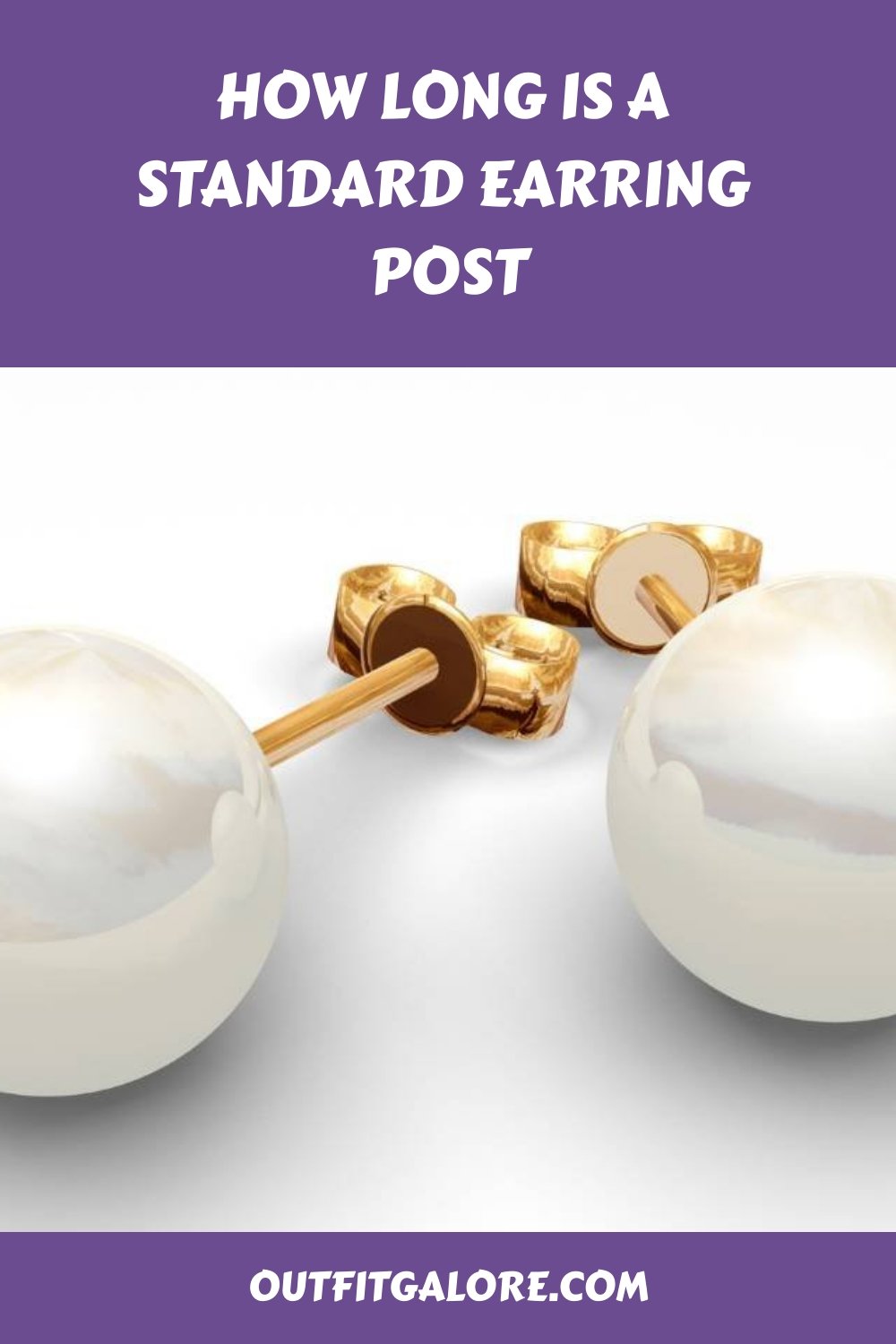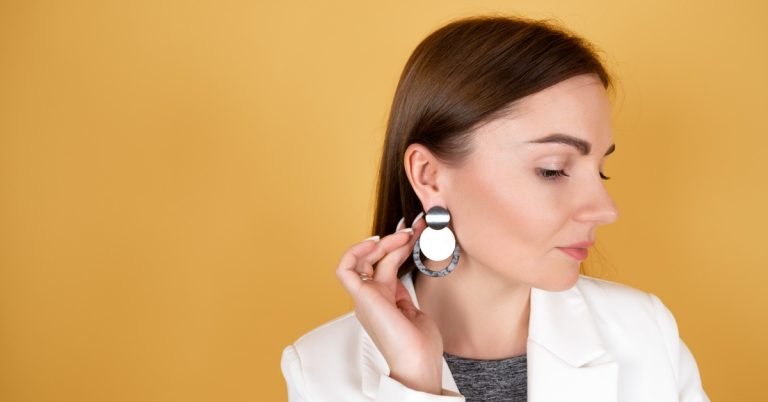How Long Is A Standard Earring Post?
Are you wondering how long the average earring post is? You may be in for a surprise. It turns out that there’s no one size fits all when it comes to the length of an earring post.
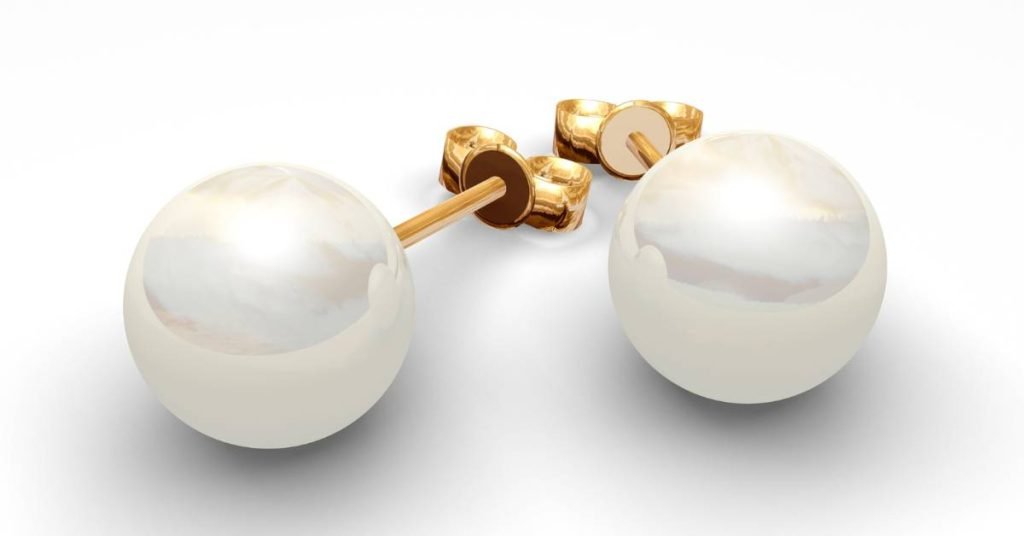
Standard lengths do exist, but depending on your style and preference, you may need to look for something outside the box. In this article we’ll explore why standard lengths are important, where you can find them, and tips for choosing the right length for your needs.
So if you’re ready to get started, let’s dive right in!
Table of Contents
Key Takeaways
- Standard earring post lengths exist, but they vary depending on the type of piercing and the size of the earring.
- Measuring earring posts with a ruler is easy, and it’s important to measure both posts if buying a pair.
- Standardization is important for both consumers and makers because it ensures proper earring presentation and fit within sizing parameters.
- Choosing comfortable earring posts involves considering the length, material, and type of backing, and caring for them properly will ensure their longevity.
What is the Standard Length for an Earring Post?
Earring posts typically come in standard sizes, with the most common length being around 8mm. This gauge is known as a 20g size and is the most commonly used body jewelry for earrings.
The post of an earring should fit comfortably in a pierced lobe, not too tight or loose, and be securely fastened to the backing or charm. The standard size helps ensure that both sides of the piercing stay even and don’t cause discomfort during wear. Additionally, it allows for different charms and backings to be easily changed out without having to replace the entire earring post each time.
As earrings come in many different styles and materials, it’s important to find one that fits properly before purchasing.
The next step is understanding why standard length is important when shopping for new earrings.
Why is Standard Length Important?
Pleasing proportions play a pivotal part in proper earring presentation. Standard length for an earring post is essential to ensure that any given pair of earrings looks good on the wearer, regardless of piercing type.
Standardization benefits both the consumer and maker, as it ensures that each item will fit within standard sizing parameters and look proportional to the body or face. It also allows makers to focus on perfecting their craftsmanship rather than worrying about whether or not their pieces are wearable.
-
Product on sale
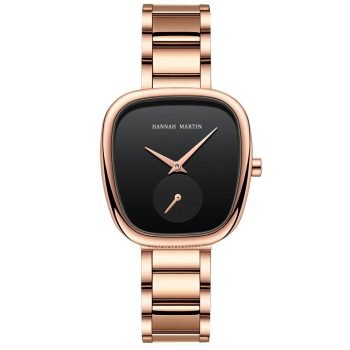 Elegant Bracelet Wristwatch For Women$28.00 – $34.00
Elegant Bracelet Wristwatch For Women$28.00 – $34.00 -
Product on sale
 Dressy Ladies Wrist Watch$27.00 – $37.00
Dressy Ladies Wrist Watch$27.00 – $37.00 -
Product on sale
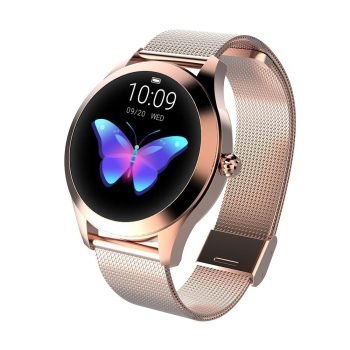 Butterfly Waterproof Smartwatch for WomenOriginal price was: $89.00.$61.00Current price is: $61.00.
Butterfly Waterproof Smartwatch for WomenOriginal price was: $89.00.$61.00Current price is: $61.00. -
Product on sale
 OLEVS Ladies Luxury Waterproof WatchOriginal price was: $416.00.$37.00Current price is: $37.00.
OLEVS Ladies Luxury Waterproof WatchOriginal price was: $416.00.$37.00Current price is: $37.00. -
Product on sale
 Circle Pearl Earrings for WomenOriginal price was: $34.00.$10.00Current price is: $10.00.
Circle Pearl Earrings for WomenOriginal price was: $34.00.$10.00Current price is: $10.00. -
Product on sale
 Creative Doodle Pendant EarringsOriginal price was: $27.00.$15.00Current price is: $15.00.
Creative Doodle Pendant EarringsOriginal price was: $27.00.$15.00Current price is: $15.00.
Achieving standard lengths for earring posts can be difficult, particularly when dealing with non-standard piercings such as cartilage piercings which require shorter posts than those used in traditional lobe piercings. The wrong size post can make an otherwise aesthetically pleasing piece of jewelry uncomfortable or even impossible to wear.
Knowing the right size for different types of piercing is key to finding comfort and looking great in your chosen jewelry designs. Earrings come in a variety of lengths, but understanding where you can find measurements for non-standard ears is key if you want to maximize comfort and style when selecting your jewelry pieces.
Now that we understand why standard length is important, let’s explore where we can find measurement for non-standard earrings!
Where Can You Find the Measurement for Non-Standard Earrings?
Finding the perfect fit for unique piercings can be tricky, but with the right measurements, it’s easier than ever!

Non-standard earring posts often require special sizes and materials to accommodate individual needs. To find the measurement for these types of earrings, here are three options:
- Earring Gauges: Using a ring gauge or mandrel is a great way to measure different sized earring posts and determine which one is right for you. This method works best when measuring post material such as acrylic, titanium, or stainless steel. It also allows you to get an accurate representation of the size before purchasing anything so that you know exactly what type of post will work best for your piercing.
- Post Materials: If you’re looking for an alternative option to gauging your earrings, then using post materials might be a good choice. Different metals like gold or silver come in various sizes that can make it easier to find something that fits your piercing perfectly. Additionally, this option gives you the chance to try out different styles and see what looks best on you without having to worry about getting it wrong, since there are many different sizes available.
No matter what type of earring post you need, finding the right size doesn’t have to be a difficult task – simply use one of these methods and get ready for a perfect fit!
What types of earrings require non-standard lengths?
What Types of Earrings Require Non-Standard Lengths?
If you’re looking for earrings that require a non-standard length, there are several types of jewelry to consider. Small or large gauge earrings may need longer posts to fit through the piercing, while heavy or large earrings may also require extra support to stay in place. Non-pierced earrings can also be found in non-standard lengths, as they often have larger backs or clips than pierced styles
Small or Large Gauge Earrings
Small-gauge earrings typically use a post that’s about 1/2 inch long. Large-gauge earrings, on the other hand, are usually closer to 3/4 of an inch – making them almost 50% longer than the standard post size.

Small or lightweight earrings often require a shorter post because they’re delicate and can be secured with magnetic closures instead of piercings. This makes it easier to put on and take off those types of earrings without damaging them or having to use tools like pliers.
Heavy or large earrings need longer posts for stability and security. This ensures that the weight of the jewelry won’t pull on your piercing too much and cause discomfort over time. Additionally, many people find that larger posts add extra support which helps prevent their jewelry from slipping out during physical activities like sports or exercise.
With these considerations in mind, it’s important to choose an appropriate post length for your type of earring so you can have a comfortable experience while wearing them!
Heavy or Large Earrings
For heavier or larger earrings, you’ll need a sturdier post that provides extra support – otherwise you might find your jewelry slipping out during activity.
Heavy earrings like hoops and dangle styles require a longer post than lightweight stud earrings do. This is because the hoop or dangle style needs to be able to move and hang freely without compromising its structure.
Fortunately, most heavy or large earrings come with longer posts that are designed to securely hold them in place – even during vigorous activity!
All things considered, it’s important to make sure you’re getting the right length of post for your earring style so that it can provide maximum security and durability. With the right post length in place, you won’t have to worry about your favorite accessories falling off at an inconvenient time.
Transitioning now into non-pierced earrings…
-
Product on sale
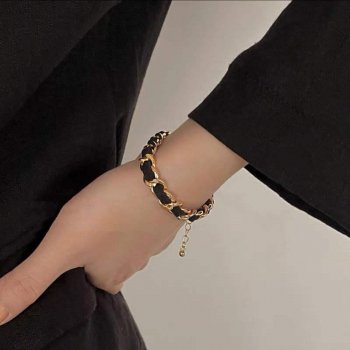 Elegant Vintage Rose Gold Black Woven BraceletOriginal price was: $14.60.$9.49Current price is: $9.49.
Elegant Vintage Rose Gold Black Woven BraceletOriginal price was: $14.60.$9.49Current price is: $9.49. -
Product on sale
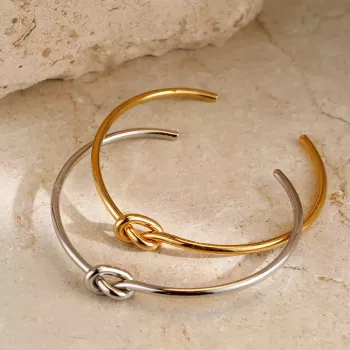 Twist Knot Stainless Steel Cuff BraceletOriginal price was: $50.46.$15.29Current price is: $15.29.
Twist Knot Stainless Steel Cuff BraceletOriginal price was: $50.46.$15.29Current price is: $15.29. -
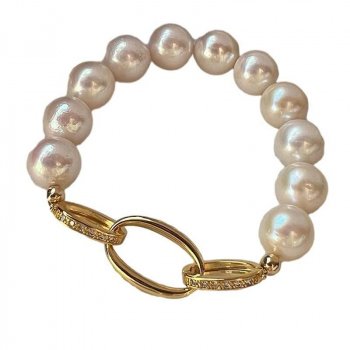 Chic Crystal & Pearl Hand Catenary Fashion Mood Tracker Bracelet$9.49
Chic Crystal & Pearl Hand Catenary Fashion Mood Tracker Bracelet$9.49 -
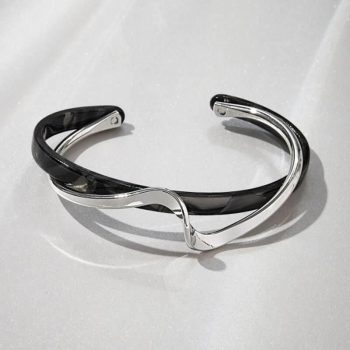 Geometric Metal Charm Bracelet for Women$14.49
Geometric Metal Charm Bracelet for Women$14.49 -
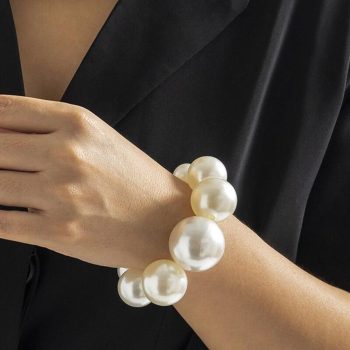 Womens Round Pearl Charm Bracelet$13.95
Womens Round Pearl Charm Bracelet$13.95 -
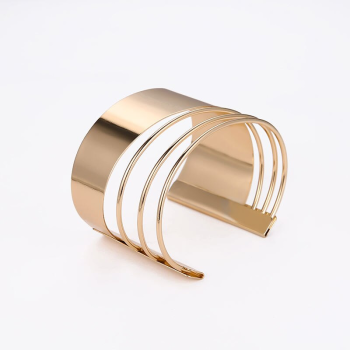 Women’s Bohemian Gold-Plated Geometric Cuff Bangle$15.65
Women’s Bohemian Gold-Plated Geometric Cuff Bangle$15.65
Non-Pierced Earrings
If you’re looking for a way to add some sparkle to your look without the commitment of pierced earrings, then non-pierced earrings are the perfect choice for you! These types of earrings come in many different designs and can range from small and dainty to large and dramatic.
Here are four great ways to wear non-pierced earrings:
- Clip on Earrings – Clip ons offer an easy solution since they simply clip onto the lobe with no need for a piercing. They often feature more delicate designs, so they’re great for those who prefer something subtle yet chic.
- Magnetic Earrings – Magnetic earrings use powerful magnets that attach securely behind the ears for a comfortable fit all day long.
Threader Earrings – Threaders provide an elegant look with their dangling design that hangs down from the lobe area, usually featuring beads or charms of some sort.
Cuff Earrings – Cuffs wrap around the cartilage at the top of your ear and have become increasingly popular among fashionistas everywhere!
No matter what type of style you’re going after, there’s a perfect pair of non-pierced earrings out there waiting just for you!
Now let’s talk about how to measure the length of an earring post without having to take it out first…
How to Measure the Length of an Earring Post
Measuring the length of an earring post is easy; all you need is a ruler. Before shopping for non-pierced earrings, it’s important to have an idea of your design preferences and how they fit into different lengths.
With the right knowledge on hand, you can make sure that your chosen earring post length matches perfectly with your style. To measure the length of an earring post, simply place the ruler against it and see how far up the post goes. You can then determine whether or not its length suits your needs.

It’s also recommended to measure both posts if buying two to ensure they are consistent in size. With this information in mind, you can make sure that you find exactly what you are looking for when it comes to choosing a post length for non-pierced earrings.
Knowing what measurements suit you best will help you select the perfect pair that meets your design preferences!
Tips for Choosing the Right Earring Post Length
Now that you know how to measure the length of an earring post, it’s important to understand what factors you should consider when choosing one. Whether you’re shopping for yourself or a loved one, here are a few tips:
- Make sure the earrings are comfortable. The standard post length is generally between 0.4 – 0.6 inches long, and should be just long enough to fit comfortably through your earlobe or cartilage piercing.
- Look for posts made from hypoallergenic materials like surgical stainless steel or titanium if you have sensitive skin or allergies to certain metals.
- Consider threaded posts with butterfly backs as they are easy to take off and put on without slipping out of place easily. For more on this, see our post on are butterfly back earrings bad.
By taking these things into account when selecting posts for your earrings, you can ensure that they look great and feel comfortable all day long!
Common Materials Used for Earring Posts
When it comes to earring posts, comfort and durability are key – so choosing the right material is essential! Stainless steel and titanium are among the most popular materials for earring posts, as they’re both lightweight and strong. Stainless steel is also highly resistant to corrosion and hypoallergenic, meaning those with sensitive skin can wear it without irritation. Titanium is also hypoallergenic, extremely durable, and won’t tarnish or discolor over time. For more on this, see our post on is stainless steel good for earrings.
For people who prefer a more classic look, gold-plated or solid gold earrings may be a better option. Gold plating offers a beautiful finish that won’t fade over time. Solid gold earrings are pricier but will never tarnish or need replacing due to wear-and-tear. Some manufacturers offer posts made from sterling silver, which is known for its low maintenance requirements and affordability.
-
Product on sale
 Cat Eye Women’s Sunglasses UV400Original price was: $24.00.$12.00Current price is: $12.00.
Cat Eye Women’s Sunglasses UV400Original price was: $24.00.$12.00Current price is: $12.00. -
Product on sale
 Anti-glare UV400 Small Sunglasses for WomenOriginal price was: $53.00.$15.00Current price is: $15.00.
Anti-glare UV400 Small Sunglasses for WomenOriginal price was: $53.00.$15.00Current price is: $15.00. -
Product on sale
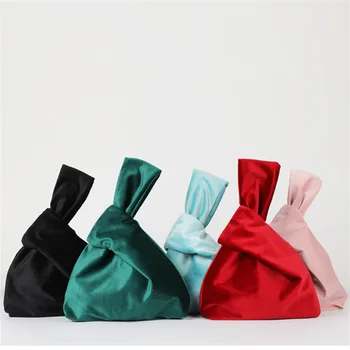 Vintage Velvet Luxury BagOriginal price was: $18.00.$15.00Current price is: $15.00.
Vintage Velvet Luxury BagOriginal price was: $18.00.$15.00Current price is: $15.00. -
Product on sale
 Retro Luxury Sequin Clutch BagsOriginal price was: $25.00.$15.00Current price is: $15.00.
Retro Luxury Sequin Clutch BagsOriginal price was: $25.00.$15.00Current price is: $15.00. -
Product on sale
 Retro Rectangle Women’s SunglassesOriginal price was: $25.00.$15.00Current price is: $15.00.
Retro Rectangle Women’s SunglassesOriginal price was: $25.00.$15.00Current price is: $15.00. -
Product on sale
 Designer Cat Eye Sunglasses for WomenOriginal price was: $35.00.$15.00Current price is: $15.00.
Designer Cat Eye Sunglasses for WomenOriginal price was: $35.00.$15.00Current price is: $15.00.
In addition to these materials, many modern designs feature plastic or acrylic earring posts that come in a variety of colors and styles. These types of posts tend to be very lightweight, so they don’t weigh down your ears when you wear them all day long. However, plastic or acrylic earrings should be taken off before showering since water can damage them over time if not properly cared for.
Moving on from here, we’ll discuss how to clean and care for your earrings to ensure their longevity.
How to Clean and Care for Earrings
Keeping your earrings clean and cared for doesn’t have to be tedious – with the right tools, you can easily maintain their beauty! Depending on the type of earring posts you own, there are different methods of care.
For example, if you have pierced ears with metal posts, it’s important to keep them free from dirt and grime by using a soft cloth or cotton swab to gently wipe off any residue. If you have plastic or porcelain post earrings, use warm water mixed with mild soap and rinse thoroughly before letting them air dry. It’s also important to remove your earrings while showering and swimming as the chemicals in these substances can damage them over time.
For more delicate materials such as gold or silver plated earring posts, avoid using abrasive cleaners that could strip away the protective coating. Instead use a jewelry cleaning solution made specifically for metals. These solutions are often formulated to preserve the original shine without harming any stones or gems that may be attached to the post itself.
When storing your jewelry, it’s best practice to keep pieces separate so they don’t get tangled up in one another which could lead to breakage or damage over time. Taking proper care of your earring posts will ensure they remain beautiful and last for many years!
Regular maintenance will ensure their longevity, so when it comes time for wearing them again, they’ll look just as good as new!
Frequently Asked Questions

How Do I Know If I Need a Standard or Non-Standard Earring Post?
When buying earrings, consider the type of post you need. Standard earring posts are longer than non-standard types and may not fit through certain piercings. Look for measurements on the package to ensure a good fit.
What Are the Different Types of Materials Used for Earring Posts?
You may find earring posts made from a variety of materials, such as gold, silver, titanium, and plastic. Each material has its own role-playing benefits and sensitivity levels that you should consider before selecting an option.
How Can I Tell If an Earring Post is the Right Length for Me?
To determine if an earring post is the right length for you, consider your earring sizing. Make sure to practice good jewelry hygiene and clean your ears before trying on new earrings. Once you find a pair that fits comfortably, you’ll know if they are the right size for you.
Are There Any Health Risks Associated with Wearing Earrings?
You could be in for a world of pain if you don’t take piercing safety seriously! Wearing earrings that are the wrong length can cause skin irritation and other health risks. So make sure to choose your earrings wisely – it’s not worth taking a risk with your health!
Are There Any Precautions to Take When Purchasing Earring Posts?
When purchasing earring posts, consider long term wear and potential allergy risks. Look for posts made from hypoallergenic materials and with a smooth finish to avoid skin irritation. Ask your piercer for advice if unsure.
Conclusion on How Long Is A Standard Earring Post

You now know the standard length for an earring post, why it’s important and where to find non-standard measurements.
You’ve learned how to measure the length of an earring post, as well as tips for choosing the right size.
With all this knowledge in hand, you’re ready to take on any earring purchase with confidence. But remember: keeping your earrings clean and cared for is just as important!
Properly cleaning and storing them will ensure that your new or existing jewelry pieces stay looking beautiful for years to come.

